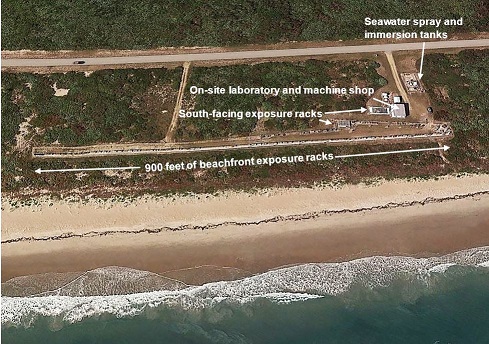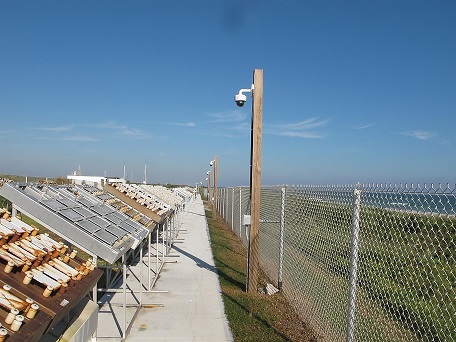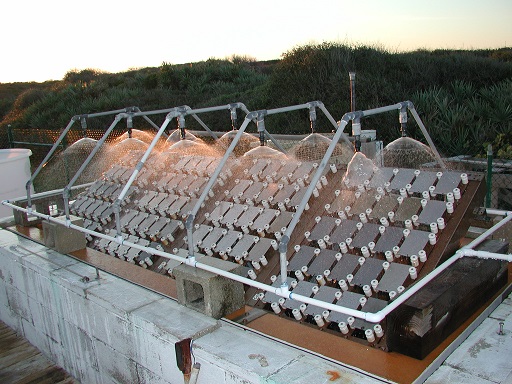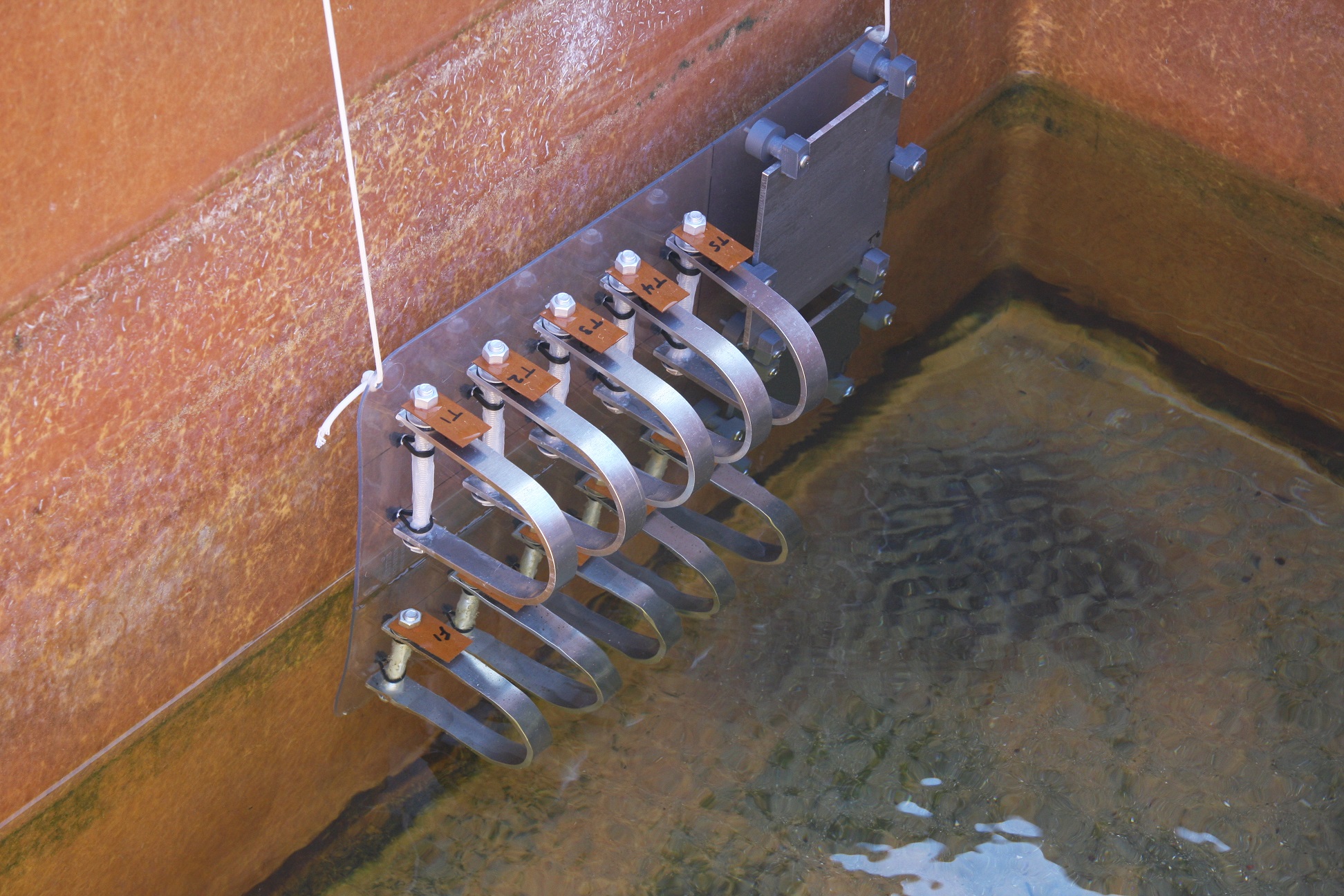
Atmospheric Exposure
Beachside Atmospheric Corrosion Test Site

The NASA KSC Beachside Atmospheric Corrosion Test Site includes 900 linear feet of long-term exposure testing along the Atlantic Ocean, an alternating seawater spray apparatus, flowing seawater immersion tanks, a full weather station, an on-side electrochemistry laboratory, and a small machine shop for sample preparation and processing. There are high definition cameras for customers to view their samples in real time, as well as a camera-free area depending on the customer’s needs.
Long-Term Atmospheric Testing

The long-term atmospheric testing area is located at latitude 28.7° N, longitude 80.6° W and at 150 feet from the mean high tide line of the Atlantic Ocean. The site includes 900 linear feet of front row coastal exposure space. The testing area has a designated area for samples that need to be facing southward for when more direct UV exposure is needed. Although the majority of our specimens are more standard sizes of 4”x 6”, 3”x 6”, or 3” x 10”, test coupons of all sizes and configuration can be accepted since our custom-built stands and racks are easily modified. Most coupons are oriented at a 30 degree angle with respect to the horizontal, although alternative orientations are available. The test site also has an area for full-sized test articles. Most experiments can be performed in either a completely exposed, semi-exposed, or sheltered configuration. Both power and data connections are available to power test articles and record onboard data instrumentation outputs. Over the years, thousands of coated test panels, stress corrosion cracking specimens, non-metallic materials, and commercially produced products have been evaluated in the high salt, high humidity, and high ultraviolet Florida seacoast environment. Results from these evaluations have helped KSC find new materials and processes that increase the safety and reliability of our launch structures and ground support equipment.
Since single corrosion rate and chloride concentration values are mere snapshots in a particular time period, NASA KSC began higher fidelity measurements of corrosion rates and chloride concentration in 2010. The corrosion rate and chloride concentration of the beachside atmospheric test site are monitored to determine the range of corrosion rates and chloride levels at the site rather than depend on a single value. The data is then evaluated for weighted mean values and seasonal corrosion rates and chloride concentrations. The corrosion rate and chloride concentration at the NASA KSC Beachside Atmospheric Corrosion Test Site are highest in the winter months due to the high number of wetness events brought about by the condensation in the morning and lower overall temperatures that leave the samples wet for a longer time period. In the summer months, the temperature are so high that the condensation and precipitation tend to evaporate much faster, causing an overall lower corrosion rate. Data that is collected at this site, including weather, corrosion rate, and chloride concentration are available.
Flowing Seawater for Seawater Spray and Immersion Testing
The flowing seawater system provides fresh seawater from the Atlantic Ocean to both the Alternating Seawater Spray Test and the Seawater Immersion Tank. This system is composed of two immersion tanks with a continuous once-through, filtered supply of seawater that is pumped directly from the Atlantic Ocean and is representative of surface oceanic conditions. Natural seawater has been documented as more corrosive than artificial seawater or simple salt solutions. Both 110 volt power and data acquisition connections are available at the facility to power test articles and record onboard data instrumentation outputs. The water in the tanks is continuously monitored for salinity, temperature, dissolved oxygen, and pH. The inlet to our site is on the open ocean providing a continuously refreshed source of clean and natural seawater. Seasonal water temperatures vary from 20o to 28oC.
Both tanks have the ability to expose a variety of specimens, including test coupons, component hardware, or full scale test articles.
Alternating Seawater Spray Test

The Alternating Seawater Spray Test (ASST) apparatus can be used in both a real-time and accelerated corrosion manner depending on the customer needs. The method was originally developed to simulate shipboard splashing, but has been repurposed to provide accelerated testing that is comparable to the long-term results at the KSC Beachside long-term atmospheric site. The ASST can spray seawater onto the samples for any amount of time period (45 seconds to 59 minutes) per hour, but 2 minutes is the most common time period for seawater spray tests. The timer runs each hour for 24 hours a day.
Seawater Immersion Test

The Seawater Immersion Tank can be used to test for real-time immersion of materials or tidal exposures, as well as an accelerated method for mocking materials that undergo degradation from a high number cyclic immersions in and out of seawater over time. The timer for this tank runs on a 24-hour cycle, where the water is added or subtracted according to the desired test. Samples can be immersed below the minimum tank fill line for constant immersion of samples.